Inaugural Progress MS arrives at ISS after smooth Docking for busy Cargo-Delivery Mission
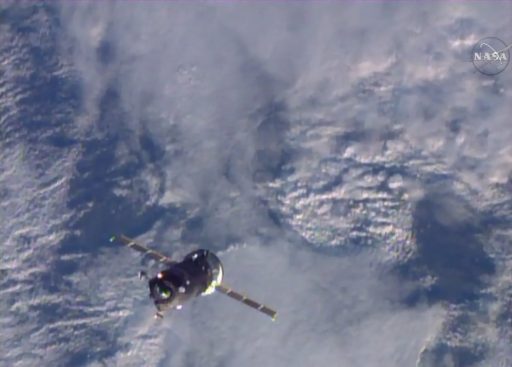
The Progress MS spacecraft made a flawless rendezvous and docking with the International Space Station on Wednesday, arriving at the orbiting laboratory for a stay of eight months, facilitating the transfer of over 2,400 Kilograms of cargo delivered by the spacecraft. Progress MS is the first of the MS series of spacecraft to fly to space in a shakedown mission testing out a number of improvements concerning flight control and communications technology, also to be introduced on the Soyuz spacecraft fleet in the near future.
The Progress MS spacecraft lifted off from Baikonur at 8:44 UTC on Monday atop a Soyuz 2-1A rocket, marking the return to flight of the upgraded Soyuz 2 rocket with the Progress spacecraft after April’s mission failure claiming the loss of the Progress M-27M spacecraft due to a destruction of the third stage and spacecraft at engine shutdown due to frequency-dynamic oscillations in the structure of the Block I stage and Progress spacecraft. After a nine-minute ride into orbit, Progress MS was cleanly separated in a smoothed-out engine shutdown sequence tweaked by about 0.3 seconds.
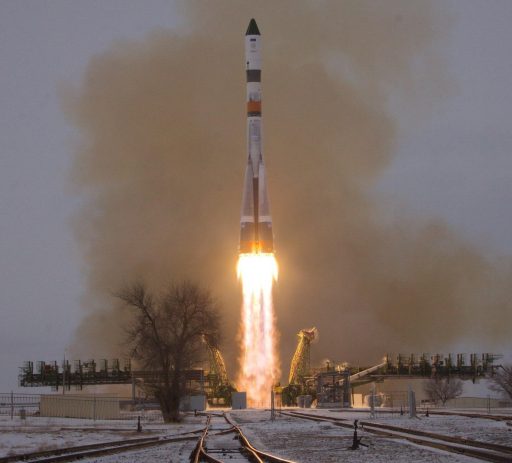
Arriving in orbit, Progress MS was set for a set of testing operations over the course of its two-day rendezvous, chosen to facilitate a thorough checkout of the new telemetry, command and navigation systems aboard the spacecraft. Progress MS introduces the capability of communicating with the ground through the Luch data relay satellites, it hosts a new Unified Telemetry and Command System, makes use of the upgraded KURS NA navigation system, has the capability of using GPS/Glonass for orbit determination, can establish a proximity comm link with ISS for the exchange of relative navigation data and, on its outside, features additional shielding and external compartments to be used in the future for the release of CubeSats.
>>Progress MS Technical Overview
The Russian space program has the luxury of flying very similar vehicles for cargo and crew missions, therefore allowing systems upgrades to be tested out on cargo missions first before being introduced on the crewed Soyuz spacecraft. Progress MS serves as a first shakedown mission of the new systems ahead of the introduction of the Soyuz MS spacecraft currently expected in June 2016 for the launch of Anatoli Ivanishin, Takuya Onishi and Kate Rubins.
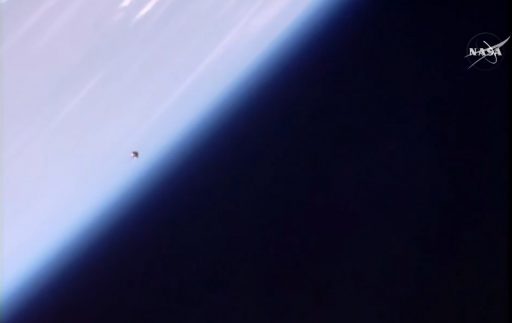
Arriving in a 200-Kilometer orbit, Progress MS first checked in with ground stations before pointing its new phased array antenna up to initiate communications with the Luch 5B communications satellite when heading out of ground station range to stay in contact with Mission Control. A pair of burns was completed on the third orbit of the mission, boosting the Progress into an orbit of 270 by 279 Kilometers. More checkouts of the various systems, including the KURS NA navigation system followed, still making use of ground station passes for command uplink. All checkouts, except for the TORU Teleoperated Control System command test, were passed without issue.
Making its climb up to ISS, Progress conducted a very small orbit adjustment on Tuesday to be positioned properly for the initiation of the fully automated rendezvous sequence that occurred at 8:10 UTC on Wednesday. The ground-targeted DV-4 maneuver placed Progress on a trajectory to enter the 200-Kilometer communications zone around ISS.
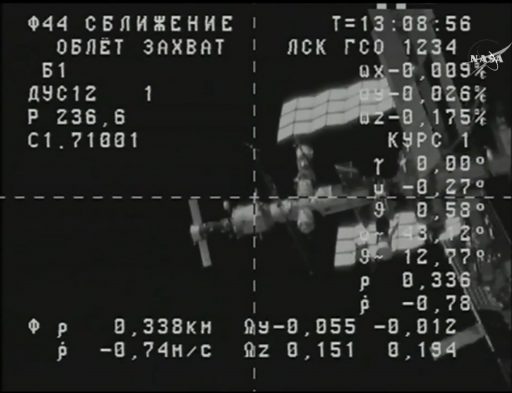
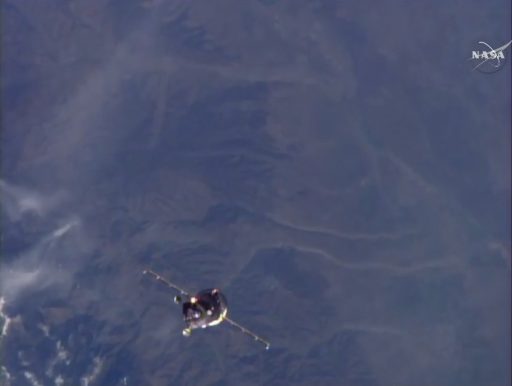
KURS activation occurred at 8:54 UTC as the new KURS NA antenna began searching for signals from the KURS-P System on ISS. Once receiving signals, KURS NA automatically oriented the Progress to point the antenna towards ISS for heading and pitch angle measurements. Approaching the vicinity of ISS, KURS also delivered range, range rate and line of sight angles. Testing of KURS at a range of 80 Kilometers showed good targeting, allowing the Rendezvous to proceed in Auto Mode.
Approaching the Space Station, Progress was homing in on its Ballistic Targeting Point located one Kilometer from ISS, serving as the target during the initial phase of the rendezvous so that any serious issues could not leave the Progress on a collision course with ISS. In case of any problems in the Rendezvous Phase up to a range of 400 meters, Progress can revert to a passive abort and harmlessly fly past ISS for another rendezvous attempt later.
Passing 15 Kilometers, Progress underwent the next round of KURS testing, this time performing a short test of the KURS system that confirmed that the data delivered by it was valid in a good Lock-On Mode. Next up was the TORU Command test from the Space Station in which Sergei Volkov switched the Progress to remote control for a moment to test out the rotational and translational hand controllers in the Service Module of ISS. TORU did not respond due to a communications issue and Progress had to approach ISS with no backup, relying on KURS to conduct an automated docking.
The KURS system remained in a good Lock-On Mode using its two ASF antennas throughout the rendezvous and brought Progress to the immediate vicinity of ISS when the targeting offset was reduced to 700 meters and then to 400 meters, requiring the Progress to make a series of three rendezvous impulse burns for which it alternated between Line-of-Sight and burn attitudes. These three burns and subsequent braking maneuvers placed the Progress on its trajectory to meet the criteria for flyaround initiation inside 400 meters.
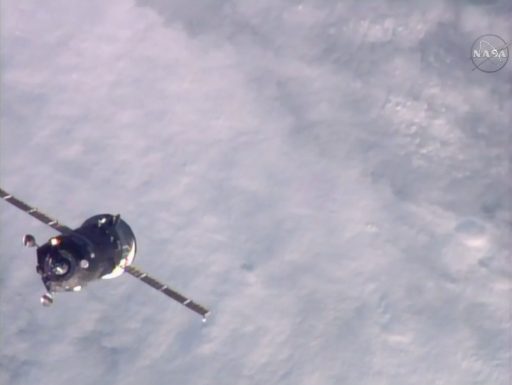
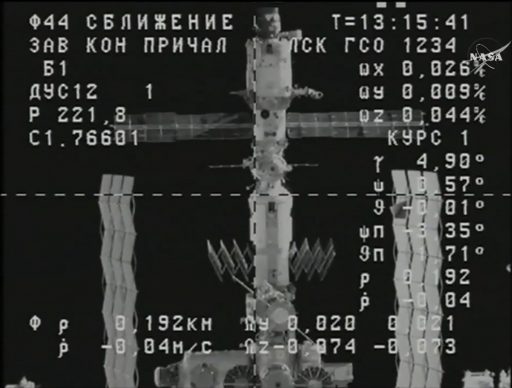
Flyaround went as planned as Progress maneuvered around the Station to get lined up with the Pirs module that had been vacated last week when Progress M-28M departed ISS. A roll maneuver was conducted to position the Progress solar arrays for the docked mission and the spacecraft nulled out all relative rates for a short moment of Stationkeeping to give the crew on ISS and the team at Mission Control a chance to check the alignment before proceeding with the rendezvous.
Final approach was initiated as Progress gently pulsed its thrusters to cover the last 200 meters to ISS, remaining in automatic control and using its DPO thrusters to keep the docking mechanism aligned with Pirs. Slowing down to just 0.1 meters per second, Progress remained on KURS and on course throughout the approach as it came in for docking.
Contact and capture occurred at 10:27 UTC when the docking probe of the spacecraft slid into the cone on Pirs to allow capture latches to engage and hold the Progress in place. Upon sensing contact, the spacecraft fired its thrusters to push in and ensure all latches would engage while ISS switched into free drift to avoid any thruster firings on the Station side.
After relative motion between the spacecraft had dissipated, the Progress retracted its docking probe and latches on both sides of the docking interface were closed to form a hard mate between Pirs and the Progress.
Later on Wednesday, the Russian crew members will perform the standard leak check before being able to open up the hatches to the Progress and outfit the interior of the spacecraft for the docked mission. Progress MS will be deactivated for its stay aboard ISS that is expected to last eight months with the departure of the craft expected in July 2016.
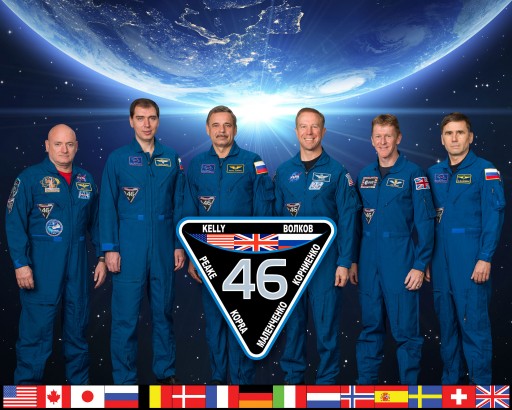
Progress MS has a total launch mass of 7,290 Kilograms containing a total cargo upmass of 2,436 Kilograms. The cargo delivered to ISS is comprised of 718 Kilograms of propellants for transfer to ISS tanks, 420 Kilograms of water, 46 Kilograms of pressurized Oxygen and air to top-up the atmosphere of ISS, and 1,252 Kilograms of dry cargo delivered inside the pressurized module of the Progress.
This dry cargo includes 199kg of sanitary equipment and parts needed for the Russian toilet facility, 60 Kilograms of medical supplies and hygiene equipment, 379kg of food provisions, and 85kg of US supplies for the Russian crew. Additionally, Progress is carrying 162kg of power system components, 5kg of atmospheric monitoring equipment, 196kg of water system components, 17kg of personal protective equipment, 7kg of fire protection hardware, 6kg of thermal control system hardware, 35kg of crew support equipment, 38kg of USOS supplies and 19kg of science utilization hardware.

